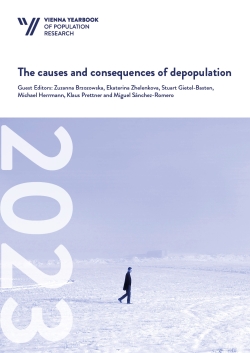
Vienna Yearbook of Population Research 2023, pp. 181, 2022/08/16
The causes and consequences of depopulation

Between 2009 and 2018, the total fertility rate fell in most European countries. In 2018, fertility was below the replacement level throughout Europe. Net migration was positive for two-thirds of European countries. This paper illustrates the implications for long-run population growth of observed net migration-fertilitymortality combinations in 20 European countries over the 2009–18 period by comparing the observed net migration to a zero population growth-related ‘replacement level’ for net migration. The results show that in several northern and north-western European countries, the net migration level has been consistently above this replacement level: if the net migration level and fertility and mortality rates remain constant, the population would increase. However, the findings also indicate that in all of the eastern European countries covered, the net migration level has been consistently below the net migration replacement level. The results further show that in Finland, Norway and Switzerland, the long-run implications of having constant fertility-mortality-net migration levels change from leading to population growth to leading to population decline. The opposite pattern is observed in Germany. The feasibility of preventing long-run population decreases through changes in net migration levels is discussed in light of the results.
Keywords: migration; population decrease; population growth; fertility; population model; Europe